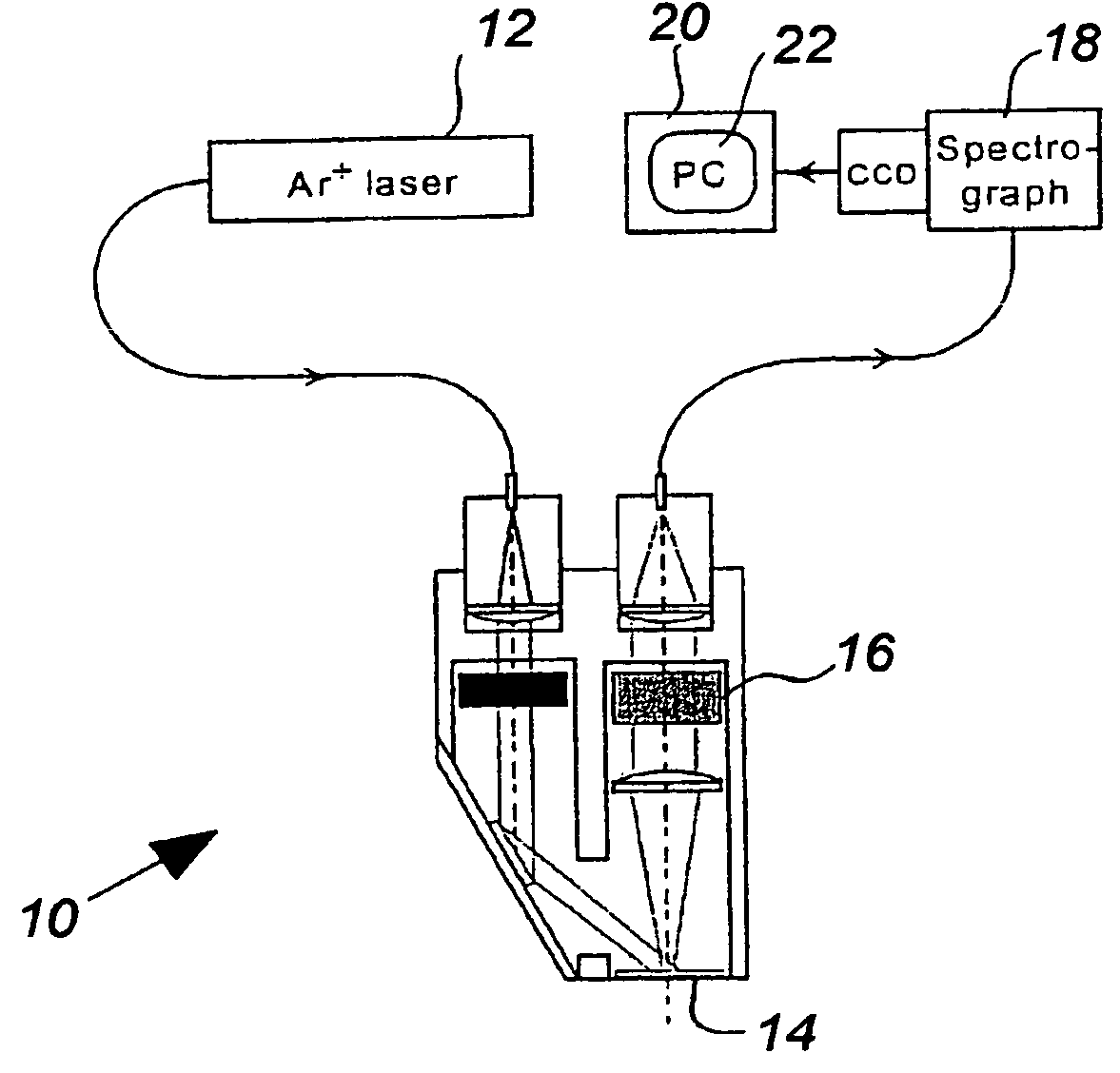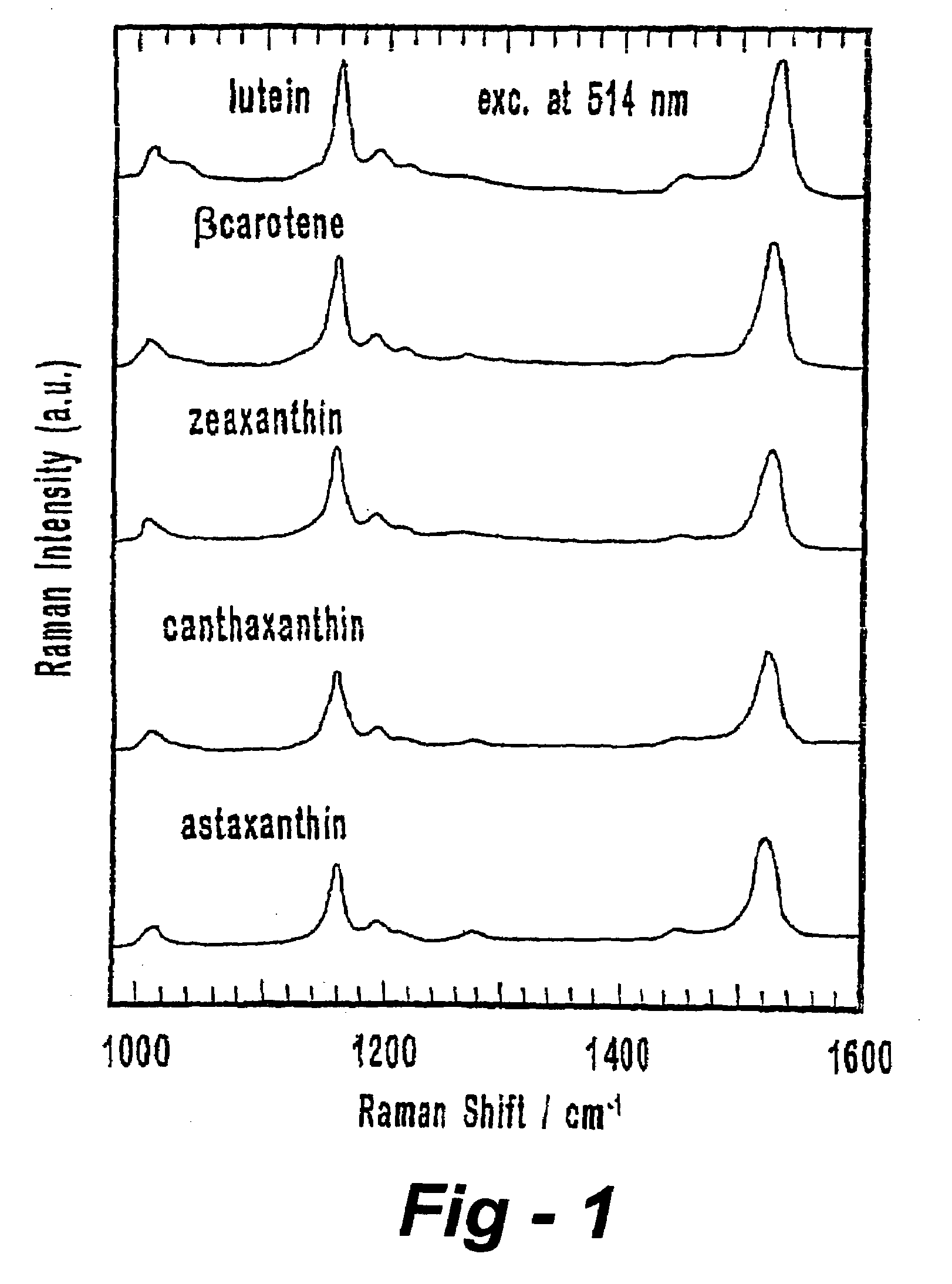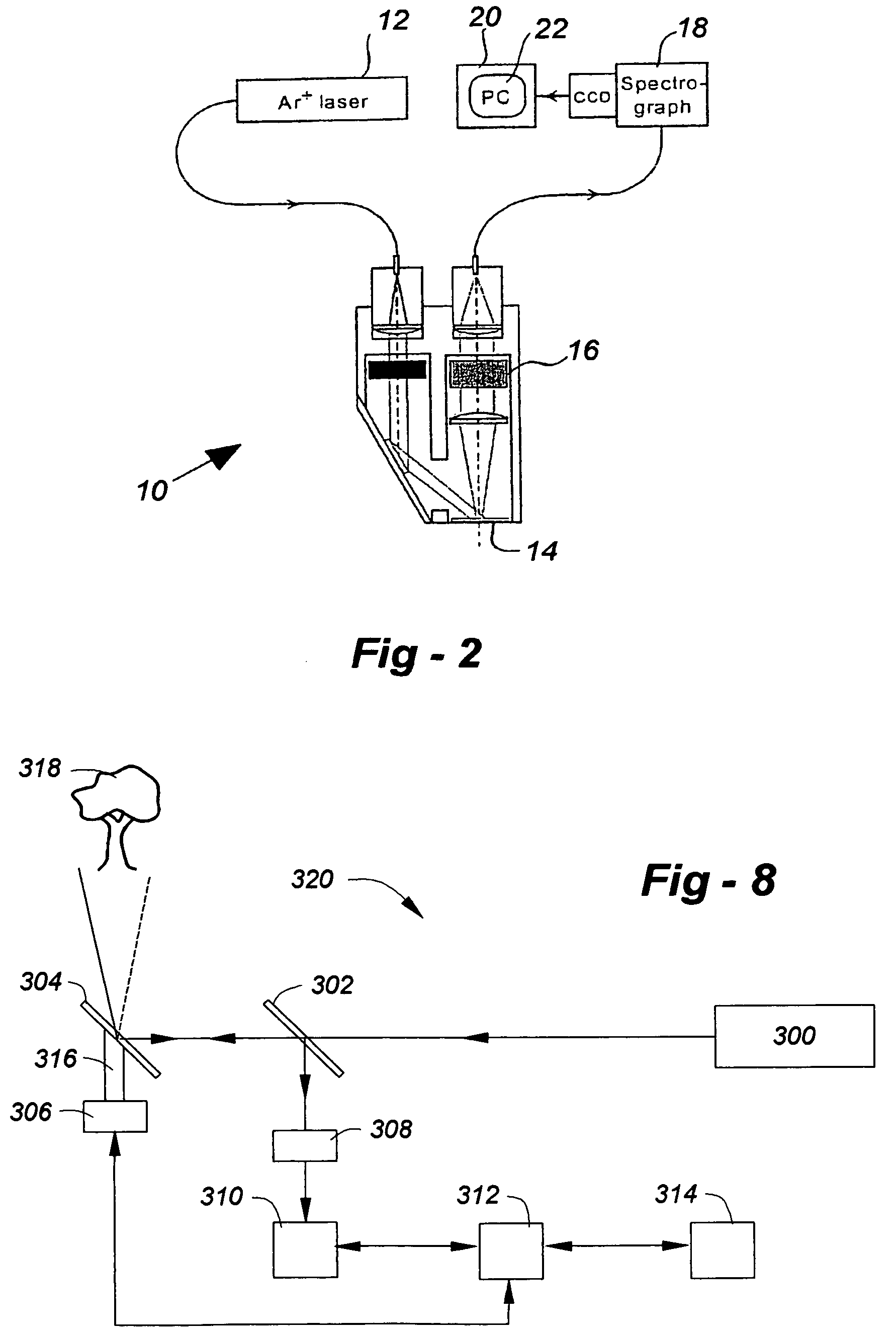Optical method and apparatus for determining status of agricultural products
a technology of agricultural products and optical methods, applied in the direction of optical radiation measurement, luminescent dosimeters, instruments, etc., can solve the problems of difficulty in identifying problems, insufficient precision of manual selection process, and insufficient general health or stress status of fruits and vegetables, so as to improve crop effectiveness, rapid determining general health or stress status, monitoring the effect of deterioration in quality and freshness
- Summary
- Abstract
- Description
- Claims
- Application Information
AI Technical Summary
Benefits of technology
Problems solved by technology
Method used
Image
Examples
Embodiment Construction
[0026]As described in U.S. Pat. Nos. 6,205,354, 5,873,831 and 4,832,483, the contents of all of which are incorporated herein by reference, in laser Raman spectroscopy, monochromatic laser light is directed onto a particular material to be tested. A sensitive detection system then detects light returning, or scattered, from the material. The majority of the light returning from the material is scattered elastically at the same wavelength of the original projected laser light. A very small fraction of the light returning from the material is scattered inelastically at a wavelength different from that of the original projected laser light in a manner known as Raman scattering. Raman scattered light is then separated from Rayleigh scattered light with the use of filters, optical gratings, prisms, and other wavelength selection techniques. The energy difference between scattered Raman light and the incident laser light, conventionally represented in wave numbers (cm-1), is related to th...
PUM
 Login to View More
Login to View More Abstract
Description
Claims
Application Information
 Login to View More
Login to View More - R&D
- Intellectual Property
- Life Sciences
- Materials
- Tech Scout
- Unparalleled Data Quality
- Higher Quality Content
- 60% Fewer Hallucinations
Browse by: Latest US Patents, China's latest patents, Technical Efficacy Thesaurus, Application Domain, Technology Topic, Popular Technical Reports.
© 2025 PatSnap. All rights reserved.Legal|Privacy policy|Modern Slavery Act Transparency Statement|Sitemap|About US| Contact US: help@patsnap.com



